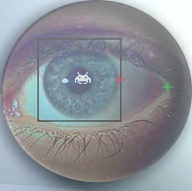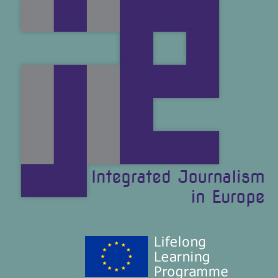Research Summary
I am currently working on automated data collection and analysis from online systems, Journalism school curriculum development (at the present I am working with researchers in Europe on analyzing the way Journalism is taught in European countries) massive online educational platforms, MOOCs and the use of gamification in education.
My research methodology usually falls under the category of content analysis. I work mostly with digital texts. I use automated data collection software from web systems (web scrapers and other application). I also use automated document analysis/classification software in conjunction with qualitative content analysis, critical discourse analysis methods. For classification purposes, I’ve used formal concepts analysis on several occasions.
I am currently working on analysis of hate speech in social media, coordinating ADHOC (Analyzing Dangerous Speech, Hate Speech and Offensive Speech in Romanian and Hungarian Public Facebook Contexts using Computational Sociology Approaches), 2018-2020, national research grant.
Topics for Bachelor/Master Thesis Supervision
- Media Representations of Events
- Media Representations of Institutions
- Media Representations of Digital Phenomena
- News on Social Media
- Emergent Digital Media Content/Presentation Formats
- Emergent Digital Media Platforms and Business Models
- Trends and Fads in New Media Culture
- Hate Speech on Social Media
- Unreliable Online News
- Online Satirical News
- Representations of Journalism Culture in Film
- The Professional Identity of Journalists
- The Online Self-presentation of Journalists/Public Figures
- Celebrities & Micro-celebrities in Digital Media
Interests
- Online Media Culture
- Computational Thinking
- Journalism and Digital Media Education
- Gamification
- Semantic Web
- Automated Data Collection
- Network Analysis
- Data Visualisation
- Formal Concept Analysis
- Natural Language Processing
- Text Mining
- Hate Speech Online
Participation in Projects
-

The ADHOC research project aims to use digital social research methodology to create an overview of the issue of hate speech on public Facebook contexts through a comparative analysis of Romanian and Hungarian Facebook Fan pages and associated comment threads. The proposal is anchored in computational sociology methodology to provide a large-scale data-driven analysis of contexts, emitters, contents and targets of dangerous speech, hate speech and offensive speech in social media with generalizable results and evidence that could drive policy in the matter. The analyzed samples include news outlets, satirical websites, social entertainment communities, political parties, governmental institutions and non-governmental organizations, activist groups. Data collection of a set estimated at 15-20 million posts and subsequent comments will be automated by using Facebook Open Graph API interrogation. The ADHOC mixed methods approach combines quantitative discourse analysis techniques, co-occurrence analysis with in-depth qualitative approaches to better understand multimodal content, tone and context of the prominent identified hate speech acts.
-

The project investigates the domestication of foreign news in Romanian and Hungarian online news outlets. The mixed-method and multilingual project analyses online news outlets and the related social media practices of their audiences in order to identify the ways foreign news are made sense of and assigned meanings in local contexts and in online news communities. The first, quantitative level of the project shall look at the salience of countries, regions, issues, actors, the prominence of foreign news sources. The second, qualitative level will identify the main discursive domestication strategies pursued by the news outlets and their online audiences, the ways in which the foreign countries, actors and affairs are endowed with local and/or personal relevance, the local sociopolitical languages and emotionalisation processes they intersect with.
-

The project aims were to develop reusable patterns, metrics, techniques and instruments for software quality and e-marketing research by using existing eye tracking technologies. The project did not intend to create technology or to provide services (as eye tracking tools are already available from certain vendors), but rather to develop new methods for e-business research, based on the emerging field of eye tracking diagnosis. The targeted area of knowledge was human-computer interaction, with its two sides: user skills and software usability, both being essential criteria in defining software quality attributes, in measuring e-advertising impact, e-commerce analytics, e-learning efficiency and e-customer behavior. In the most general sense, the project aimed to increase attraction of socio-economical software applications as they need to be regarded by the common user as domestic instruments rather than information technology artifacts. The methodology engaged by the project combined statistical analysis, data mining, e-business case studies, software quality standards, front-end engineering and software testing methods, all based on data extracted from tracking the users eye movement during various software usage patterns.
-

The project looks to implement these communication changes in the classroom, to extend this experience to the European citizens trough the future journalists.
In a changing landscape, both media and universities have to adapt to the new reality of media convergence and transmedia.
Integrated Journalism in Europe promotes four basic factors to consider in journalism education today: the convergence of media, the relationship between universities / business, professional simulation and the internationalization of the teaching.